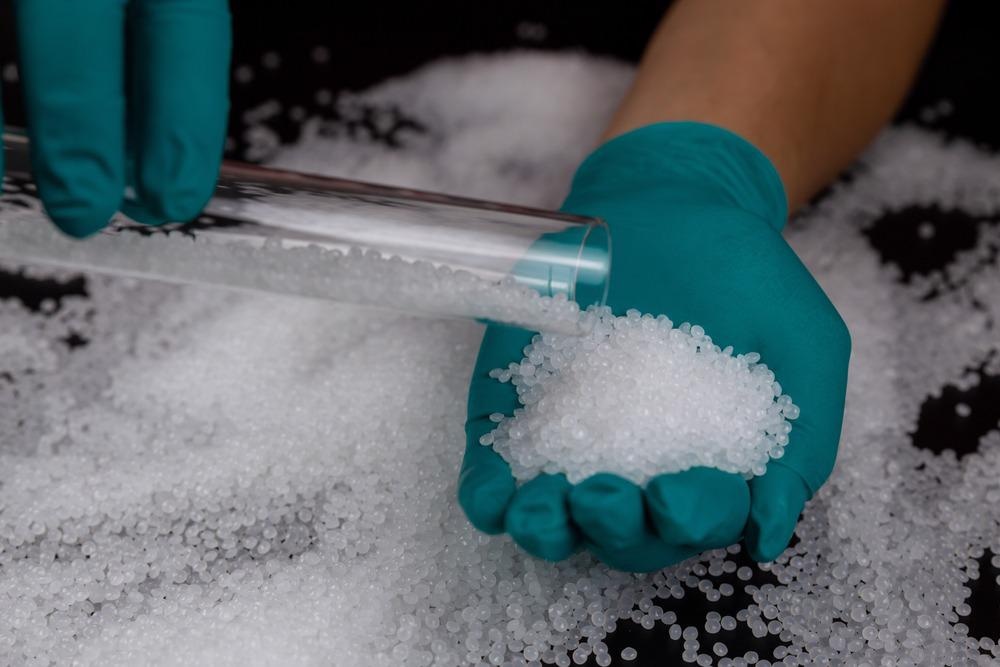This article discusses a new effective thermal conductivity model of polymers filled with high conductive particles (HC particles).

Image Credit: Meaw_stocker/Shutterstock.com
In a recently published paper, a scientist from Oil Gas Scientific Research Project Institute, SOCAR, Baku, Azerbaijan, put forward a new thermal conductivity model of highly conductive polymer composites. This article is a discussion of the thermal conductivity of polymer composites and how this can be improved by adding conductive particles.
What are Polymers?
Polymers are composed of very large molecules formed by a combination of different monomers (smaller and simpler molecules), which can be natural or synthetic. Polymers are the basis of many constituents in living beings - for instance, protein.
Moreover, they are the foundation of many naturally occurring mineral deposits such as diamond, feldspar, and quartz. In industries, they constitute the foundation of many artificial materials such as rubbers, paper, glass, plastics, and concrete.
Thermosetting and Thermoplastic Polymers:
Polymer resins that become soft upon heating and hard upon cooling make a particular type of plastic called thermoplastic. The physical properties of thermoplastics change and become a homogenized liquid or soft and flexible when heated. This way, they can be resized and reshaped. Polyethene, polypropylene, nylon, Teflon, etc., are examples of thermoplastics.
Cross-linked polymers that are heavily branched chained are known as thermosetting polymers. When heated, these plastics form extensive cross-links in molds and become infusible, and reshaping these is not possible. Bakelite, Urea-formaldehyde resins, etc. are examples of thermosetting polymers.
Polymer Composites and their Industrial Applications
Polymer composites are made up of thermosets or thermoplastics with a range of continuous and noncontinuous reinforcements/fillers, which are primarily used to increase the material's performance. These are becoming more popular in a variety of technology sectors. The polymer works as a matrix resin in polymer composites, penetrating and bonding to the reinforcement bundles. These materials are mostly utilized in the automotive and aerospace industries.
Why Might it be Useful to Increase the Thermal Conductivity?:
Polymers usually have low thermal conductivity. However, in modern industries, the demand for polymers with high thermal conductivity increases day by day. This is due to the properties of polymers like flexibility, environmental resistance, low cost, low density, etc., compared with other materials with high thermal conductivity such as metals.
How is this Done?
Polymer matrices are typically filled with fillers such as metallic powders, ceramic powders, and carbon-based materials such as carbon black, graphite, or carbon nanotubes to improve the thermal conductivity of a polymeric material. The filler content, filler–polymer interaction, particle size, and manufacturing method all have a role in the improved thermal characteristics of these composites. Polymers' thermal characteristics significantly influence their behavior, causing them to behave differently.
Recent research proposed a new model of thermal conductivity of polymers that are filled with constituent parts having high conductivity. This was achieved by representing polymer composite structures by summating two distinct parts. One part constituted a structure with polymer particles that were distributed arbitrarily and fully covered by the monolayers of accumulated filler particles.
These were also identified as shell structures. The other part constituted a structure in which filler particles were uniformly distributed and did not contact each other. The results obtained by this method were matched with the experimental data as well as with that of Lichtenecker's model and Mamunya's model. It was discovered that with the increase in strength between macromolecules, the aggregation of High Conductive (HC) particles in the polymer also increases.
Other Methods:
To predict the thermal conductivity of a two-phased system, several other models are used, such as Maxwell, Hashin-Shtrikman, LewisNielsen, Bruggeman, Lichtenecker, and Mamunya. If we take a look at Maxwell's model, it uses the potential theory that obtains a specific solution for the conductivity of sphere-shaped particles, nontouching constituent parts in a continuous matrix state.
The equations obtained from this model can approximate the thermal conductivity with a lower particle concentration, in which particles are at such a distance that they are nontouching.
Advantages and Limitations:
There are so many advantages of developing methods to improve the thermal conductivity of polymer composites. Polymer composites have low density, low chemical resistance, high flexibility, and better capability to absorb mechanical shocks. Polymer composites with high thermal conductivity have a significant advantage over conventional metals because they have all the advantages of polymers over metals.
They also have high thermal conductivity, just like metals. Also, polymer composites have low cost, and their fabrication method is also very simple. One of the limitations of polymer composites is that they have a high coefficient of thermal expansion, which means that when they are heated, their change in length per unit rise in temperature is relatively more than that of metals.
Future Scope
The future for composite polymers with high thermal conductivity looks very promising. Due to their unique properties, the possibilities of their applications are enormous. It is anticipated that these will be commonly used in many sectors of society in the near future, for example in the electric sectors, protective equipment, automobile industries, and aerospace sectors.
References and Further reading
Abbasov, H. The effective thermal conductivity of polymer composites filled with high conductive particles and the shell structure. Polymer Composites. https://onlinelibrary.wiley.com/doi/abs/10.1002/pc.26559
Brabazon, D. (2021). Introduction: Polymer Matrix Composite Materials. https://www.researchgate.net/publication/351595734_Introduction_Polymer_Matrix_Composite_Materials
Devaraju, S., Hariharan, A., Balaji, K., & Alagar, M. (2021). Thermal and Morphological Analyses of Polymer Matrix Composites. https://www.semanticscholar.org/paper/Thermal-and-Morphological-Analyses-of-Polymer-Devaraju-Hariharan/c7a9cd268e193151e601d56c821cbfe800fffbc0
Disclaimer: The views expressed here are those of the author expressed in their private capacity and do not necessarily represent the views of AZoM.com Limited T/A AZoNetwork the owner and operator of this website. This disclaimer forms part of the Terms and conditions of use of this website.